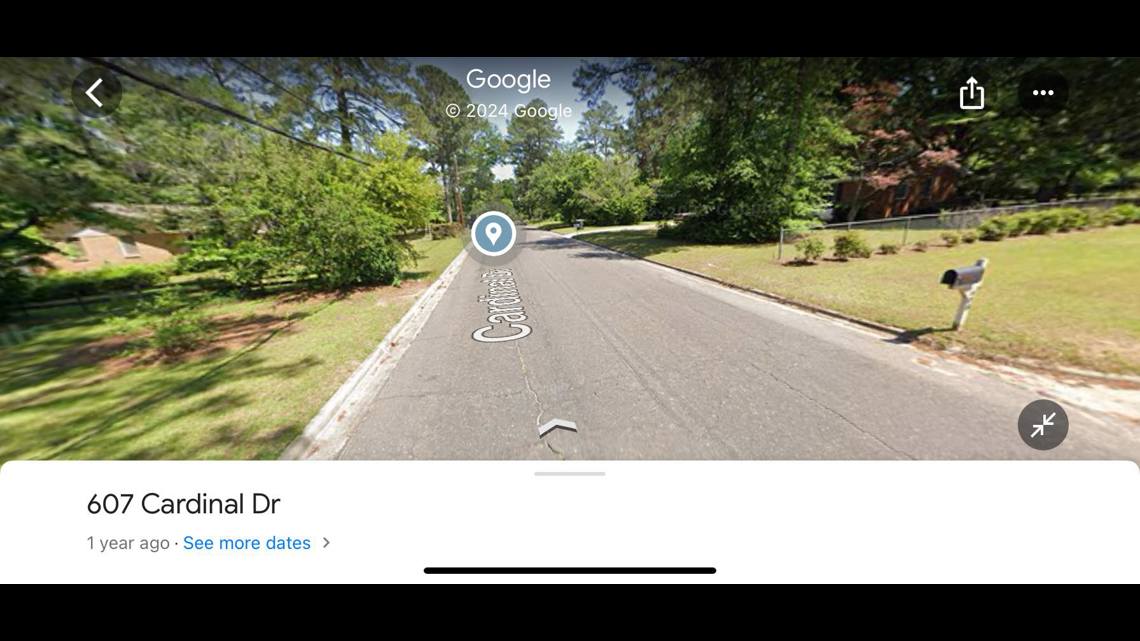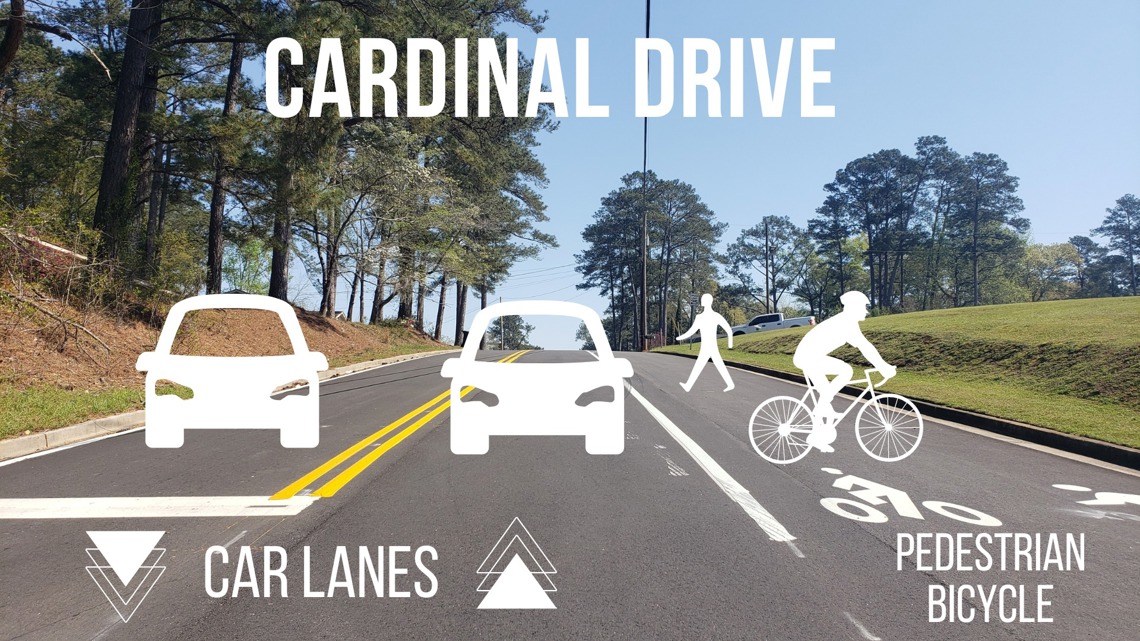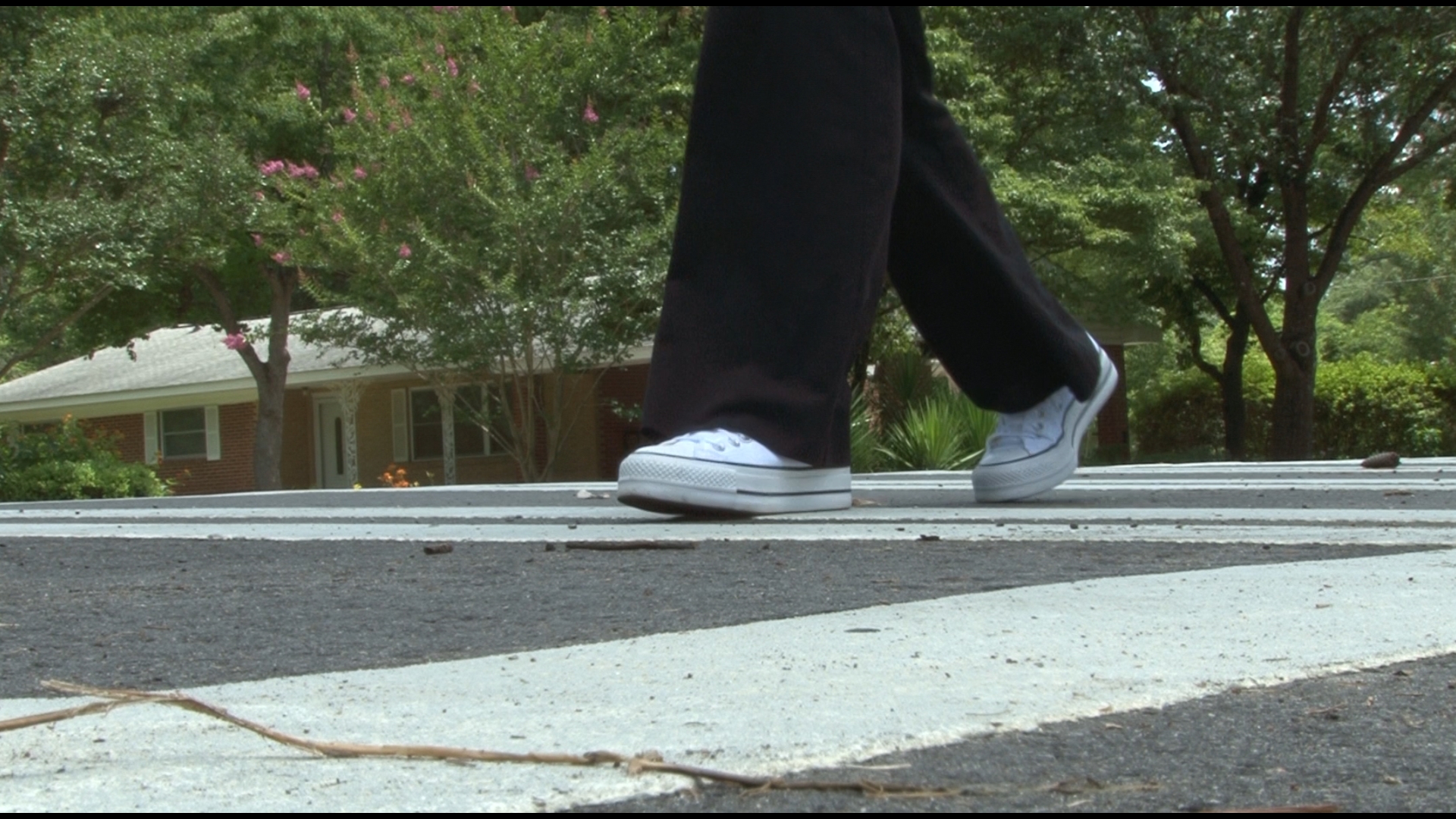DUBLIN, Ga. — The City of Dublin is going on a diet — but it doesn't have anything to do with food. It's what city leaders call a "road diet."
"So some of our roads were built with, you know, with roads that are 30 feet wide. You really only need about 22 feet," Dublin Mayor Joshua Kight said.
The road diet is something new the city implemented a couple of months ago. It hopes to reduce speeding traffic along neighborhood streets and keep people safe.
So just as a diet hopes to help a person slim down, the road diet is doing the same thing for roads by making them a little more narrow.
At this point, they chose two streets for a road diet: Cardinal Drive and Edgewood Drive.
Eugene Burrus has lived on Cardinal Drive for about 10 years.
He said he loves going on daily walks with his wife to manage his type 2 diabetes. But he didn't always feel safe talking strolls around the neighborhood.
"There's still a lot of drag racing. I mean, not two cars at a time, but just people going way over the speed limit," Burrus said.
This is what Cardinal Drive looked like a few months ago.


Now, Cardinal Drive has slimmer lanes, and the extra space that was tucked got used to create a bicycle and walking lane.
"We've got these very wide roads, and that encourages high speeds," Kight said.


He said a lot of that speeding is due to Dublin's visitors.
"Dublin has about 16,000 people that stay here at night, the residents. But in the daytime, our population doubles; sometimes more than doubles. So we've got a lot of traffic that has been using our neighborhoods as cut-throughs. And so you've got this large traffic volume that happens in Dublin during the daytime. And we wanna protect our neighborhoods from some of that," Kight said.
Burrus said the slimmer lanes have made a difference.
"The walking lane here, the walking bicycle lane is a huge improvement," Burrus said.
He hopes to see speed cushions added to his neighborhood next.
"That will be a deterrent. For I think the speeding, because from Hillcrest all the way down to Brookdale, there are no stop signs," Burrus said.
The road diet is one part of Dublin's bigger speed safety effort, called Project Slow Zone.
Kight said they're in year two of Project Slow Zone, and they're working on streets in cycles.
"We're always open to going back to any particular street and seeing what has worked well and what hasn't worked well. This has got to be a continuous project. This isn't like a typical construction project, where you just do it one time, you build it, and then you're gone. This is a, this is an ongoing process for continuously improving quality of life in neighborhoods," Kight said.
Edgewood and Cardinal Drive are on Dublin's second cycle for street improvement under Project Slow Zone. According to the city's website, cycle three streets include:
-Rollingwood
-Dunwoody
-Camelia
-East Mary
-Central Avenue
-Rowe
-Flanders
-Benton
-Pinehurst
-Brookdale
-Pinewood
And cycle four streets include:
-Rutland
-Mockingbird
-Riverview
-Ray
-Woodridge
-Cascade
Kight said the first phase for cycles three and four has already started, and that includes studying the streets for traffic violations.
To submit your street for future cycles, you can contact the city through their website.

